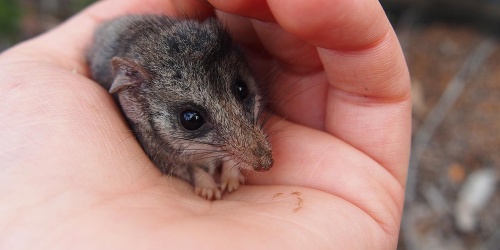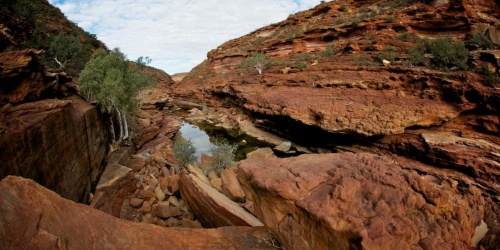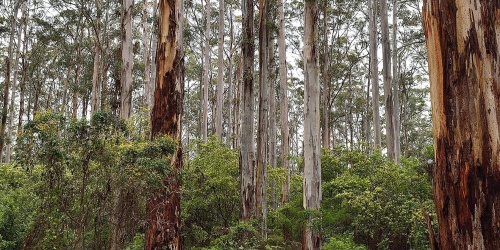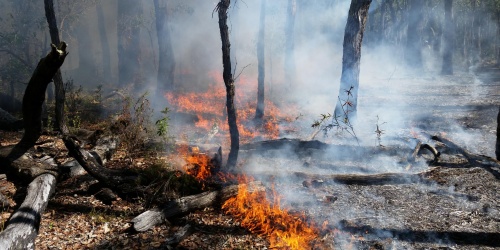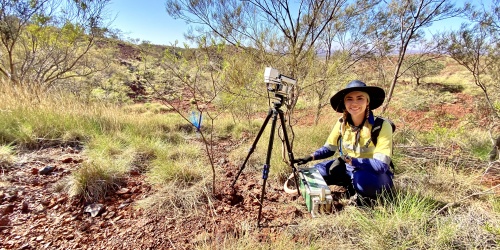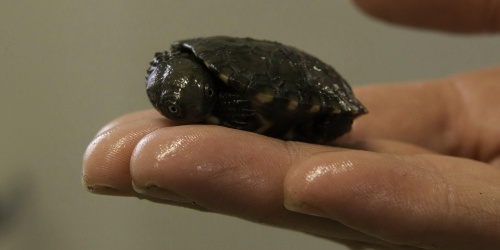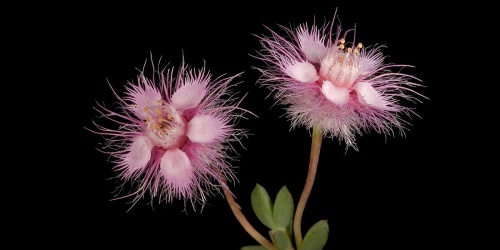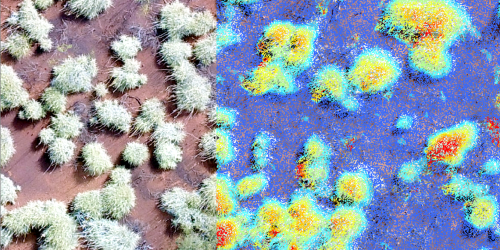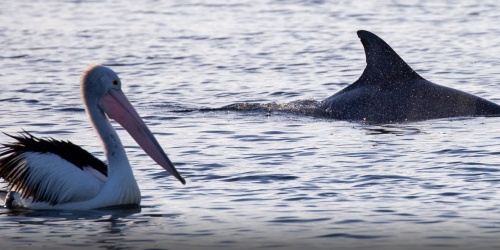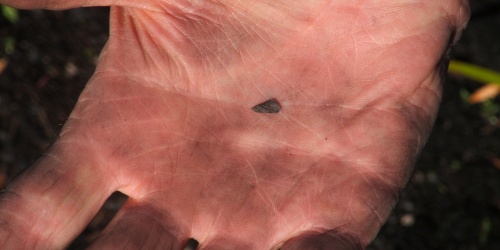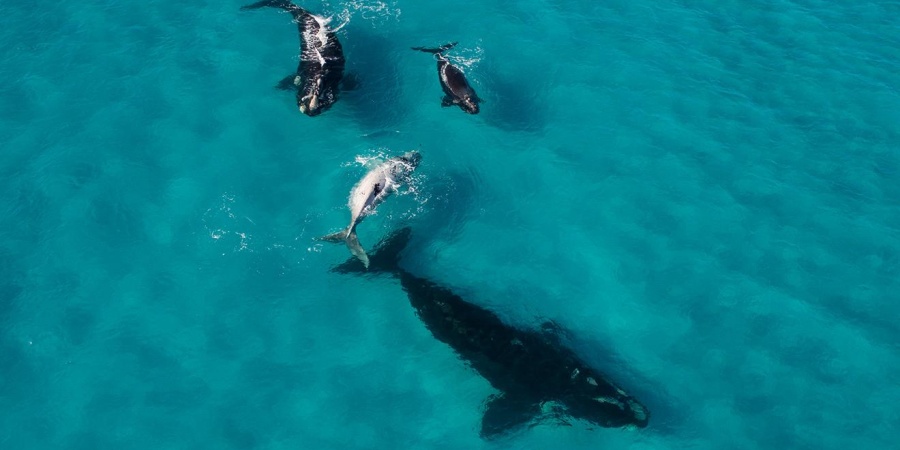
Whales and dolphins - Photo by Peter Nicholas/DBCA
About Marine Science
- Undertakes strategic and standardised long-term monitoring on the ecological values of Western Australia’s marine park network, threatened and protected marine fauna
- Undertakes and facilitates prioritised marine research across Western Australia
- Coordinates and delivers environmental offsets
- Provides ecological information to inform annual reports to the conservation and parks commission on the status of marine parks, and the various management strategies employed to manage them
- Partners with universities (including student supervision), other research organisations, and other sectors of the Department of Biodiversity, Conservation and Attractions
Active monitoring programs
The Marine Science Program undertakes a range of regular monitoring programs to provide data to inform management and conservation. Find out about some of our regular monitoring programs below.
Coral monitoring
- Ningaloo Marine Park
- Bardi Jawi Gaarra Marine Park
- Lalang-gaddam Marine Park
- Mayala Marine Park
- Montebello/Barrow Islands Marine Conservation Reserves
- North Kimberley Marine Park
- Rowley Shoals Marine Park
- Shark Bay Marine Park
Dugong monitoring
- Exmouth Gulf
- Ningaloo Marine Park
- Shark Bay Marine Park
Invertebrate monitoring
- Jurien Bay Marine Park
- Marmion Marine Park
- Ngari Capes Marine Park
- Shoalwater Islands Marine Park
- Walpole and Nornalup Inlets Marine Park
- Jurien Bay Marine Park
- Montebello/Barrow Islands Marine Conservation Reserves
- Ngari Capes Marine Park
- Ningaloo Marine Park
- Rowley Shoals Marine Park
- Shark Bay Marine Park
Fish monitoring
Monitored once every three years
- Bardi Jawi Gaarra Marine Park
- Jurien Bay Marine Park
- Lalang-gaddam Marine Park
- Marmion Marine Park
- Mayala Marine Park
- Montebello Islands Marine Park
- Ngari Capes Marine Park
- Ningaloo Marine Park
- North Kimberley Marine Park
- Rowley Shoals Marine Park
- Shark Bay Marine Park
- Shoalwater Islands Marine Park
Monitoring program under development
- Eighty Mile Beach Marine Park
- Mamang-Maambakoort Marine Park
- Mirning Marine Park
- Wudjari Marine Park
- Western Bight Marine Park
Macroalgae monitoring
Monitored once every two years
- Marmion Marine Park
- Shoalwater Islands Marine Park
Monitored once every three years
- Jurien Bay Marine Park
- Ngari Capes Marine Park
Monitoring program under development
- Mamang-Maambakoort Marine Park
- Mirning Marine Park
- Wudjari Marine Park
- Western Bight Marine Park
Penguin monitoring
Monitored fortnightly during breeding season (April–December)
- Shoalwater Islands Marine Park (Penguin Island)
Pinniped monitoring
Australian sea lions
Monitored monthly during peak breeding season
- Abrolhos Islands
- Carnac Island Nature Reserve
- Jurien Bay Marine Park
- Marmion Marine Park
- Shoalwater Island Marine Park
Long-nosed fur seals
Monitored monthly during peak breeding season
- Ngari Capes Marine Park
Seagrass monitoring
Monitored annually
- Ngari Capes Marine Park (shallow sites)
Monitored once every two years
- Marmion Marine Park
- Ngari Capes Marine Park (deep sites)
- Shoalwater Islands Marine Park
Monitored once every three years
- Jurien Bay Marine Park
- Shark Bay Marine Park
- Yawuru Nagulagun/Roebuck Bay Marine Park
Monitoring program under development
- Mamang-Maambakoort Marine Park
- Mirning Marine Park
- Wudjari Marine Park
- Western Bight Marine Park
Snubfin dolphin monitoring
Monitored once every two years
- Lalang-gaddam Marine Park (Malandoom Prince Regent River)
- Yawuru Nagulagun/Roebuck Bay Marine Park
Turtle monitoring
Monitored every year by North West Shelf Flatback Turtle Conservation Program
- Cape Dommett
- Delambre Island
- Eco Beach
- Thevenard Island
- Yawuru Nagulagun/Roebuck Bay Marine Park
The North West Shelf Flatback Turtle Conservation Program also assists with monitoring programs at the below locations
- Cable Beach
- Cape Lambert (Wickham)
- Port Hedland (Care for Hedland)
- Eighty Mile Beach
Water temperature monitoring
Monitored every year
- All Marine Parks
Water quality monitoring
Monitored twice per year
- Yawuru Nagulagun/Roebuck Bay Marine Park
- Walpole and Nornalup Inlets Marine Park
Active research projects
The Marine Science Program has a range of active research projects underway to improve our understanding of marine biodiversity, ecosystems and conservation. A list of current projects are below, while detail on these and previous research projects can be found in the Biodiversity and Conservation Science annual research reports.
Marine Science Program
- A partnership approach to filling key knowledge gaps on dugongs in northern Australia using novel technologies
- Alternative eDNA methodologies for fish detection
- Assessing pressure on coral communities from snorkelers at high visitation sites in Ningaloo Marine Park
- Advancing observations and predictions of WA marine heatwaves
- Prioritising onground actions for the endangered Australian sea lion
- Australian sea lions in the Perth metropolitan area: abundance, movement and habitat use
- Australian wide synthesis of baited video data to answer broad-scale ecological questions
- Benefits of marine parks for marine fishes in a changing climate
- Collation of historic data for Shark Bay, Marmion and Shoalwater Islands Marine Parks
- Conservation and management of humpback whales in the Pilbara region
- Detection and identification of dugong through seawater eDNA
- Distribution and abundance estimate of Australian snubfin dolphins at a key site in the Kimberley region, Western Australia
- Diversity of infaunal polychaete assemblages in Walpole and Nornalup Inlets Marine Park (collaboration with Museums Victoria)
- Do marine reserves adequately represent high diversity cryptobenthic fish assemblages in a changing climate?
- Dugong population and habitat survey - Shark Bay and Ningaloo
- Efficacy of electronic shark deterrents on a schooling shark species
- Global FinPrint
- Integrating ecological, social and cultural values of the coastal waters of Roebuck Bay (collaboration)
- Mudcrabs in Roebuck Bay: Supporting Yawuru traditional owners to manage culturally important resources
- New type of communal microbialite in tropical waters
- Spatial and temporal patterns of temperate reef communities in southwest Australia
- Spatial and temporal patterns in the structure of intertidal reef communities in the marine parks of south-western Australia
- Spatial and temporal patterns in benthic invertebrate communities of the Walpole and Nornalup Inlets Marine Park
- Spatial ecology of Campanile symbolicum in the Ngari Capes (collaboration with The University of Western Australia)
- Spatio-temporal variability of coral reefs at the global scale: causalities, idiosyncrasies and implications for ecological indicators
- The influence of macroalgal fields on coral reef fish
- Understanding the key ecosystem services provided by the seagrass meadows of Western Australia
- Understanding the drivers of hypoxic events and impacts to the coral communities in Bill’s Bay, Ningaloo Marine Park
- Whaleshark behavioural response to tourism interaction in Ningaloo Marine Park
North West Shelf Flatback Turtle Conservation Program
The North West Shelf Flatback Turtle Conservation Program is a 60-year flatback turtle conservation program implemented by the Marine Science Program. You can read more about the program and volunteering opportunities on their website.
- Impact of environmental conditions on the foraging habitat, behaviour and health of flatback turtles (Natator depressus) – co-supervision of PhD project with Murdoch University
- Investigating flatback’s diet using eDNA
- Linking distributional and dietary patterns with the health of green turtles in Yawuru Nagulagun Roebuck Bay Marine Park – co-supervision of PhD project with Murdoch University
- Monitoring sand temperatures along Western Australian coastline
- Skeletochronology and stable isotope analyses of flatback turtles
- Understanding cumulative impacts from human activities on sea turtles’ critical habitats in Western Australia
- Understanding movements and identifying important habitats of sea turtles in Western Australia
- Understanding predator-prey interactions between ghost crabs and marine turtles for better management of an endangered species
Our people
| Thomas Holmes | Marine Science Program Leader |
| Scott Whiting | Principal Research Scientist (Northwest Shelf Flatback Turtle Conservation Program) |
| Kelly Waples | Principal Research Scientist |
| Richard Evans | Marine Monitoring Coordinator |
| Holly Raudino | Senior Research Scientist (Marine Fauna) |
| Osmar Luiz | Senior Research Scientist (Marine Ecosystems) |
| Sabrina Fossette-Halot | Senior Research Scientist (Northwest Shelf Flatback Turtle Conservation Program) |
| Tristan Simpson | Senior Environmental Officer (Knowledge Exchange) |
| Will Robbins | Research Scientist |
| Claire Ross | Research Scientist (Corals) |
| Tahlia Bassett | Research Scientist (Corals) |
| Jordan Goetze | Research Scientist (Fish) |
| Simone Strydom | Research Scientist (Seagrass) |
| Julian Tyne | Research Scientist (Marine Fauna) |
| Ines Leal | Research Scientist (Invertebrates) |
| Kevin Crook | Research Scientist |
| Tanika Shalders | Research Scientist (Temperate Benthic) |
| Iain Parnum | Research Officer (Marine Remote Sensing) |
| Molly Moustaka | Research Scientist (Dampier) |
| Clodagh Guildea | Project Officer (Science Communication and Education) |
| Natasha Samuelraj | Administrative Assistant |
| James Gee | Senior Technical Officer |
| Damon Driessen | Senior Technical Officer |
| Kiehana Carter | Technical Officer |
| Daisy Church | Technical Officer |
| Kate Livingston | Technical Officer |
| Cydney Williamson-Smith | Technical Officer |
| Shannon Pugh | Technical Officer |
| Belle Mullins | Technical Officer |
| Eleanor Wise | Technical Officer |
| Eva Robinson | Technical Officer |
| Nidhi Menon | Technical Officer |
| Mike Taylor | Technical Officer |
| Joana Almeida | Technical Officer |
